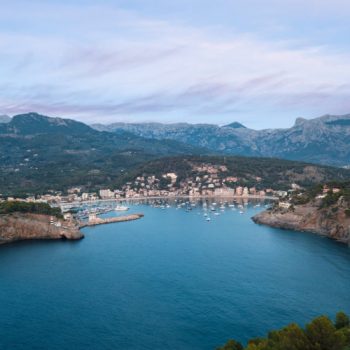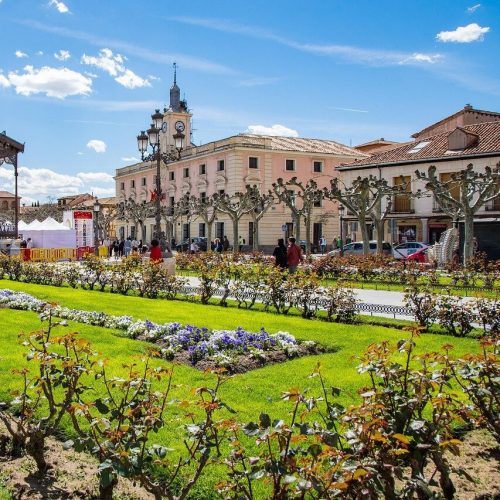
Day Trips from Madrid
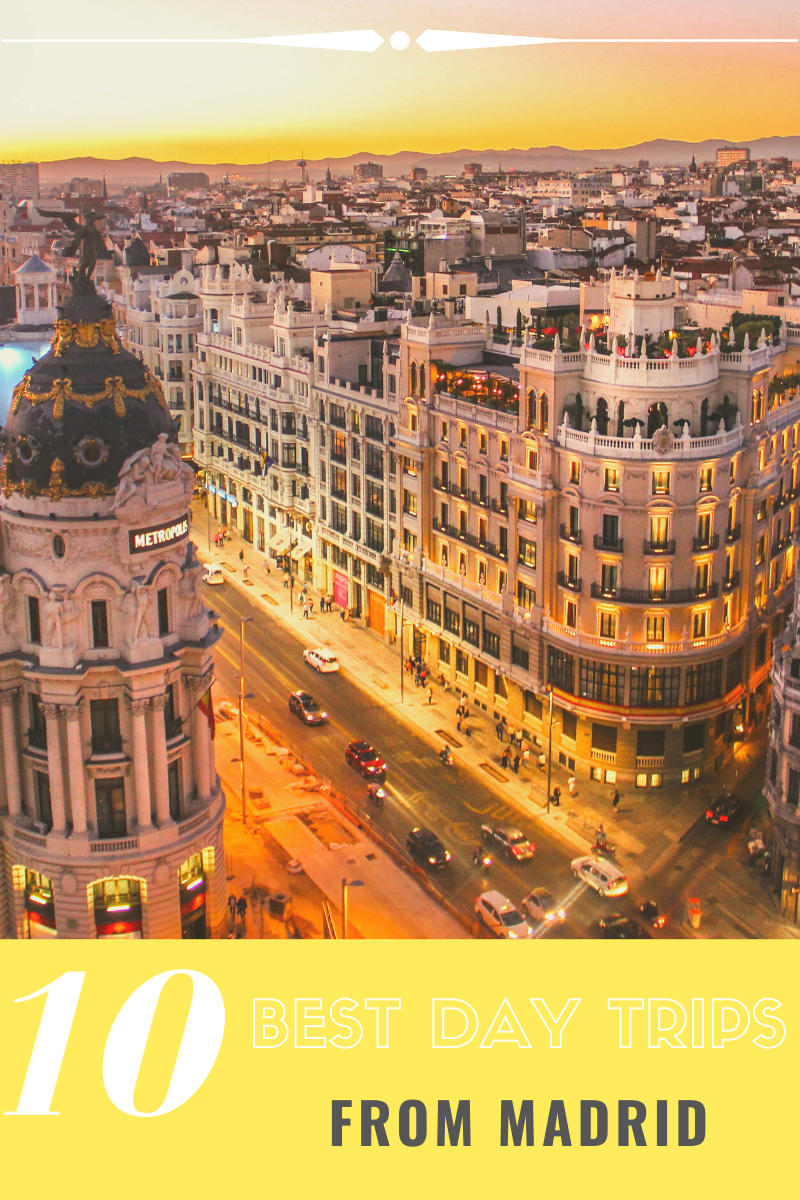 Dear Kim,
Dear Kim,
As mentioned in the other posts of this favorite day trips series, this list contains ten of the best destinations for day trips outside of the city of Madrid. Before we get questions like “What about Ávila, Salamanca, and Toledo?” we simply want to add the caveat that there are PLENTY more places you could get to from Madrid in under two hours. However, we would not RECOMMEND that you spend only one day in any of the aforementioned cities.
That being said, we have left off some of the bigger, more well-known options as we believe you might want to spend more time there. Instead, our recommendations include places within a 1.5 hour-drive radius of Madrid that we believe will feel worth the trip, but not rushed, to do in one day.
Alcalá de Henares
Incredibly well-connected to Madrid by public transport, you can find this university town which is also the birthplace of renowned Spanish author, Miguel de Cervantes. The university is the place where Cervantes himself was educated and it is beautiful! Free tours are offered in multiple languages so we recommend learning a bit more about it by taking advantage of that option.
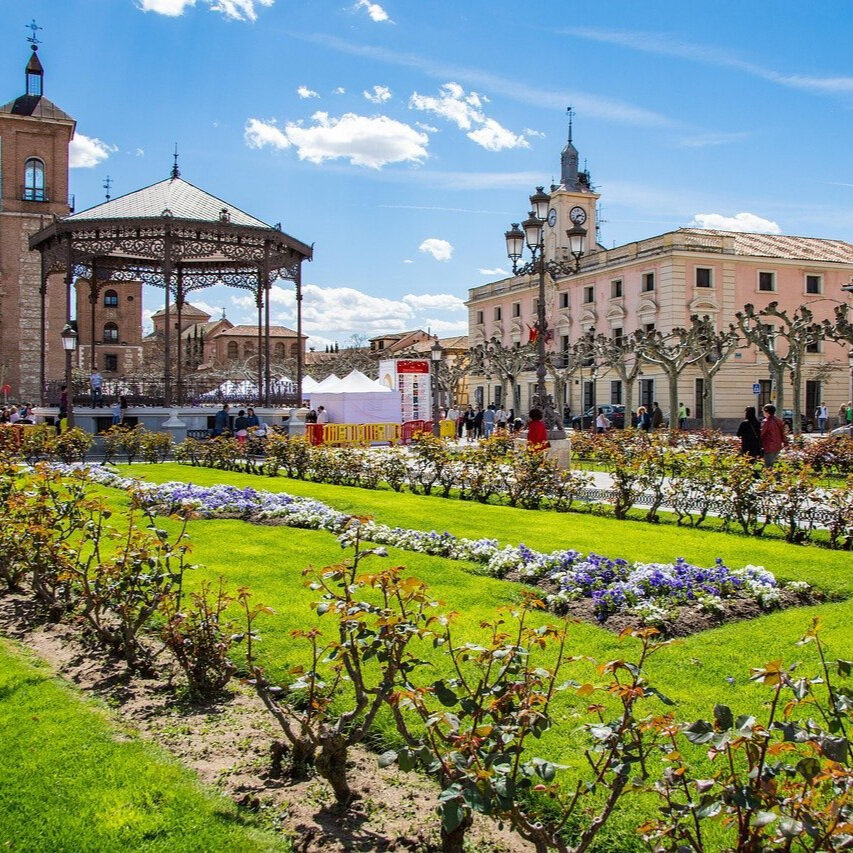 Additionally, there is a picturesque central plaza and, depending on the time of year, you might happen upon one of Spain’s most important Medieval markets or a fun, inexpensive wine festival (usually in October). Alcalá de Henares is one of the few places in this region of Spain where the free tapas culture is strong, so be sure to take advantage of that as well as see the unusually large stork population. You surely won’t miss their enormous nests which some would describe as looking like they belonged to pterodactyls!
Additionally, there is a picturesque central plaza and, depending on the time of year, you might happen upon one of Spain’s most important Medieval markets or a fun, inexpensive wine festival (usually in October). Alcalá de Henares is one of the few places in this region of Spain where the free tapas culture is strong, so be sure to take advantage of that as well as see the unusually large stork population. You surely won’t miss their enormous nests which some would describe as looking like they belonged to pterodactyls!
How to get there: Alcalá de Henares is just a 35-minute Cercanías train ride away from Madrid. Look for line C2 or C7 or, better yet, if you are traveling at peak times there is an additional direct option called CIVIS that can get you there in just 20 minutes. Of course, you might also opt to drive or take the inexpensive bus option. See your options here.
Aranjuez
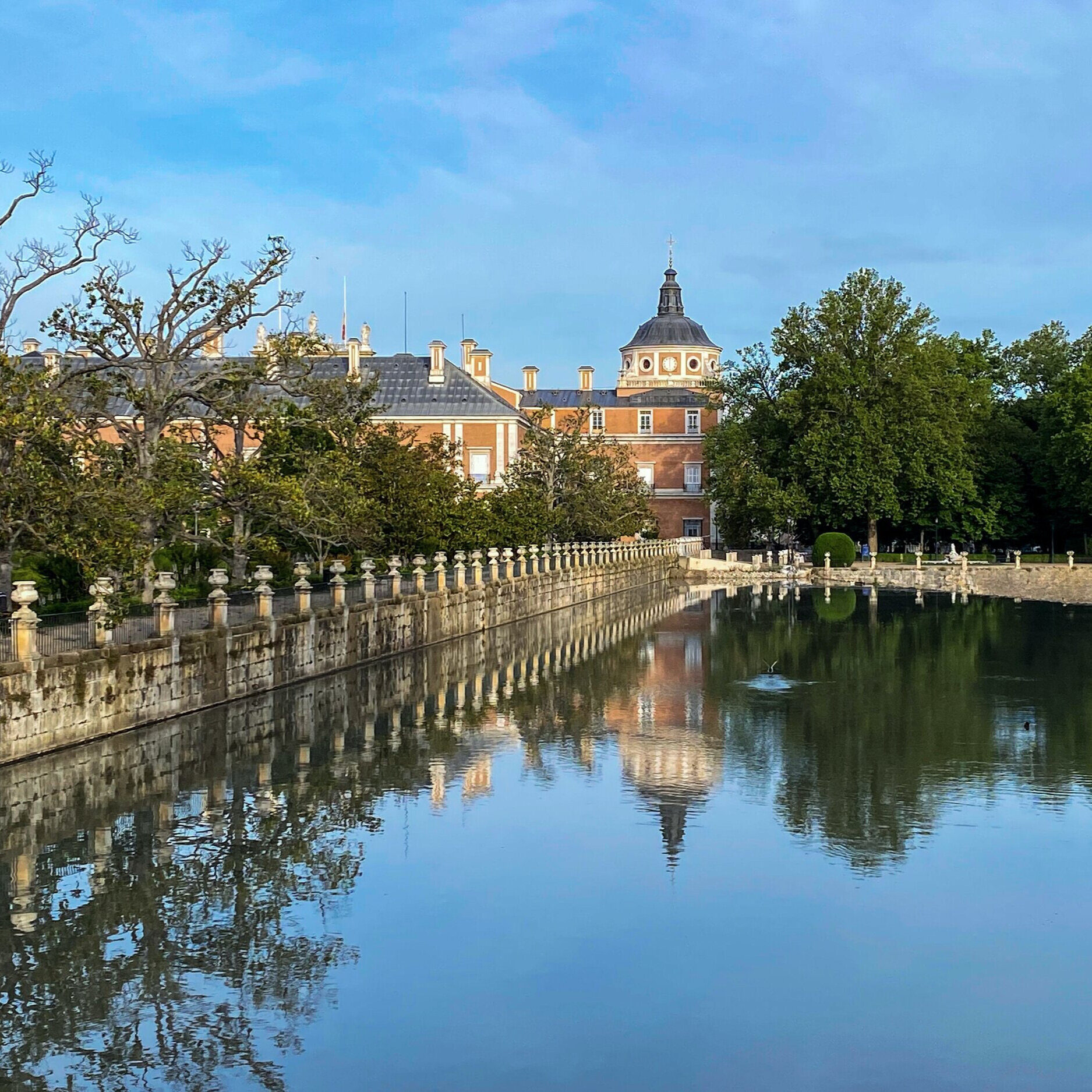 Located in the southern tip of the Madrid communidad, you can find the Royal Estate of Aranjuez. This destination is both a city and a municipality. The palace is quite impressive and is surrounded with beautiful gardens. Perhaps of particular interest is the display within the palace of the most prominent dresses of the Spanish queens over the centuries.
Located in the southern tip of the Madrid communidad, you can find the Royal Estate of Aranjuez. This destination is both a city and a municipality. The palace is quite impressive and is surrounded with beautiful gardens. Perhaps of particular interest is the display within the palace of the most prominent dresses of the Spanish queens over the centuries.
There are many historical and political sites to visit in Aranjuez, in addition to the many parks, gardens, and plaza de toros. The entire cultural landscape of Aranjuez has been declared a UNESCO World Heritage Site so it is a great place to visit if you are interested in the history of Spain and, particularly, seeing one of the historical residences of the Spanish royal family.
How to get there: Aranjuez can be easily reached by car, bus, or train. The train service from Madrid runs hourly and there are additional cute touristic options such as the Tren de la Fresa (Strawberry Train) and the steam-locomotive heritage railway for summer visitors. Read more here.
Buitrago de Lozoya
Enclosed within its Moorish walls, Buitrago is a picturesque town known for its castle. Although small, the town boasts some of the most beautiful landscapes in the area. This is unsurprising when you consider the juxtaposition of the Moorish castle and walls alongside the pristine blue lake.
Additionally, Buitrago hosts some unique cultural events such as a live nativity scene (un belén viviente) at Christmas time, a Medieval fair during the first week of September, and a Corpus Christi celebration (forty days after Easter).
How to get there: Unfortunately, Buitrago is not as convenient to travel to as the first two destinations. Your best bet will be driving (or ride-sharing, such as through Bla Bla Car). Alternatively, there are two bus lines (191 and 196) that connect the town with Madrid.
Chinchón
Like many places in Spain, Chinchón’s architecture is the result of many different time periods and cultures. The influence of Neolithic, Roman, and Arab rules are prominent in the many historical sites such as the Castillo de los Condes (The Castle of the Counts), Antigua Convento de Augustín (The Ancient Convent of Augustus), etc.
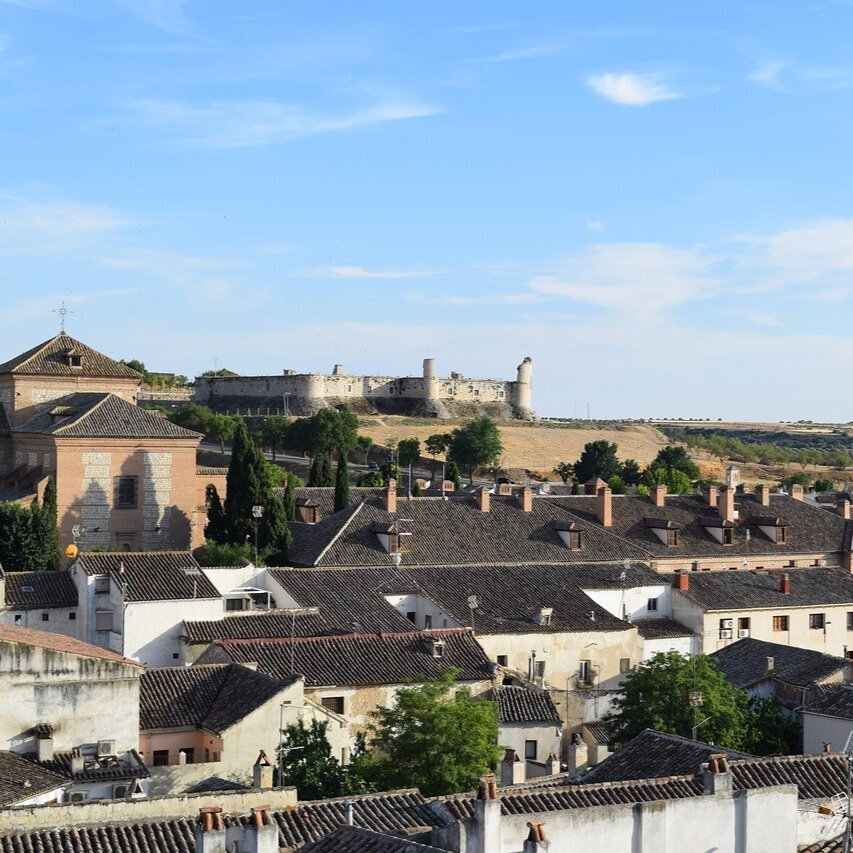 In addition to the great hiking in the surrounding area, enjoying the beautiful old plaza, and/or appreciating the cute donkeys reminiscent of yesteryear, we recommend visiting Mesón Quiñones. This winery provides a truly unique experience, allowing you to visit the cuevas del murciélago (literally the “bat caves”) where they make wine and providing you with a souvenir shot glass-sized cup to taste-test the wines along the tour.
In addition to the great hiking in the surrounding area, enjoying the beautiful old plaza, and/or appreciating the cute donkeys reminiscent of yesteryear, we recommend visiting Mesón Quiñones. This winery provides a truly unique experience, allowing you to visit the cuevas del murciélago (literally the “bat caves”) where they make wine and providing you with a souvenir shot glass-sized cup to taste-test the wines along the tour.
How to get there: Chinchón is a less well-connected town as well. However, there is only one bus line that connects from Madrid (337) as well as line 430 which connects Chinchón and Aranjuez if you wanted to double-up and visit both. Otherwise, we recommend driving.
Consuegra
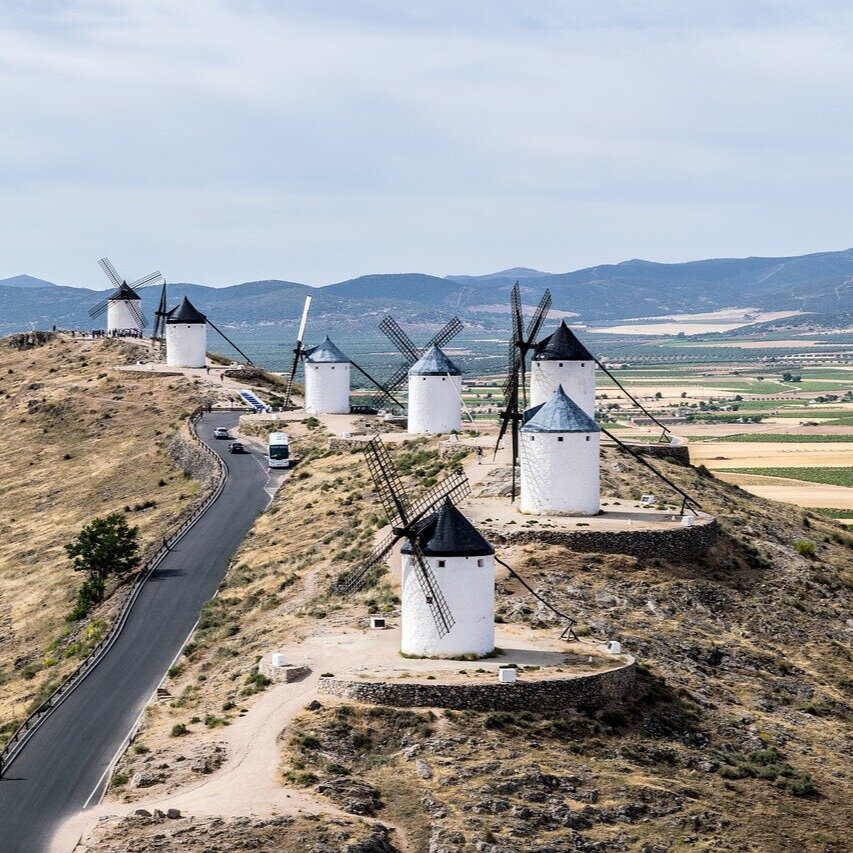 If you know anything about the story of Don Quixote, you’re probably curious to see some of Spain’s traditional windmills which feature prominently in Quixote’s journey. If you’re staying in Madrid and want to see some, you’re in luck! Just a 1.5 hour drive from the city, you can find Consuegra, home of twelve of those windmills—one of the highest concentrations of traditional windmills left.
If you know anything about the story of Don Quixote, you’re probably curious to see some of Spain’s traditional windmills which feature prominently in Quixote’s journey. If you’re staying in Madrid and want to see some, you’re in luck! Just a 1.5 hour drive from the city, you can find Consuegra, home of twelve of those windmills—one of the highest concentrations of traditional windmills left.
The town of Consuegra itself is rather small and sleepy but it’s worth a stop for lunch and a wander before or after visiting the windmills at the top of the hill. Be sure to visit the one active windmill that has been turned into a ‘museum’ to teach visitors how these windmills work.
How to get there: While you can find some bus options from Madrid, this will extend your travel time to 2.5 hours one-way and limit you greatly as the local bus will take you to the town, not the top of the hill where the windmills are located (and this is not a simple trek!). We recommend driving or perhaps looking for a tour bus option specific to this destination.
 El Pardo
El Pardo
In the northern part of the communidad of Madrid, you can find El Pardo, where the Royal Palace of El Pardo is the biggest attraction. This area is also filled with history, most importantly it was the official residence of General Francisco Franco after the Spanish Civil War. Additionally, the Monte de El Pardo nature preserve is considered one of the best conserved Mediterranean forests in all of Europe. It is certainly worth a visit if you are a fan of trekking and nature.
How to get there: Unfortunately, there are no direct trains or buses that run from Madrid to El Pardo. If you cannot drive, the best option is to take the metro to a stop that will put you close to the 601 or 602 bus line which goes to El Pardo.
El Escorial
If you’re keen on hiking, El Escorial is an excellent day trip for you. The landscapes and foliage in this area are gorgeous and the town (technically a municipality and villa of Madrid) is historically significant as well. In 1560, King Felipe II passed through El Escorial and took a particular interest in the region, eventually overseeing the construction of the Real Monasterio de San Lorenzo de El Escorial.
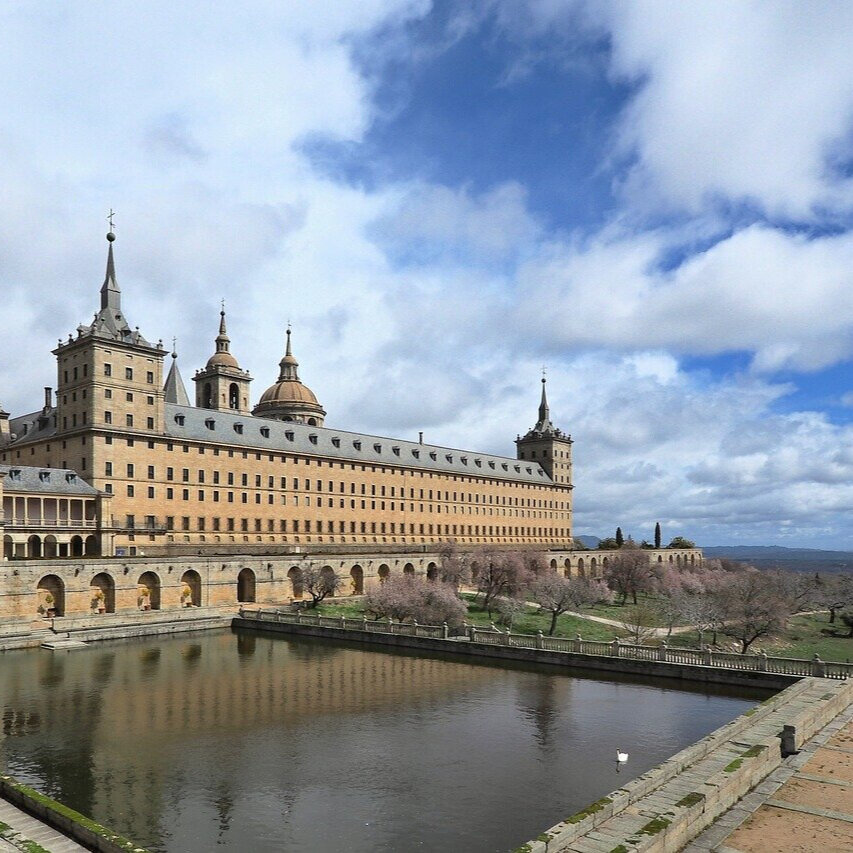 This monastery is incredibly impressive and definitely the focal point for visitors of El Escorial today. Whether or not you choose to take advantage of the local hiking, you should definitely schedule time to tour the monastery.
This monastery is incredibly impressive and definitely the focal point for visitors of El Escorial today. Whether or not you choose to take advantage of the local hiking, you should definitely schedule time to tour the monastery.
How to get there: Thankfully, El Escorial is easier to reach by public transport. There is a regular RENFE train that will get you there in about an hour. Alternatively, driving will give you more flexibility to incorporate both hiking and sightseeing with ease.
Segovia
This is perhaps the only city on our list that you may have heard of previously as it is incredibly famous and, seeing as you can catch the high speed train and arrive in only 30 minutes, it is a popular day trip from Madrid. Segovia’s emblematic monuments included the acueductos (aqueducts) and alcazar (one of the many sites around the world rumored to have inspired the image of Cinderella’s castle).
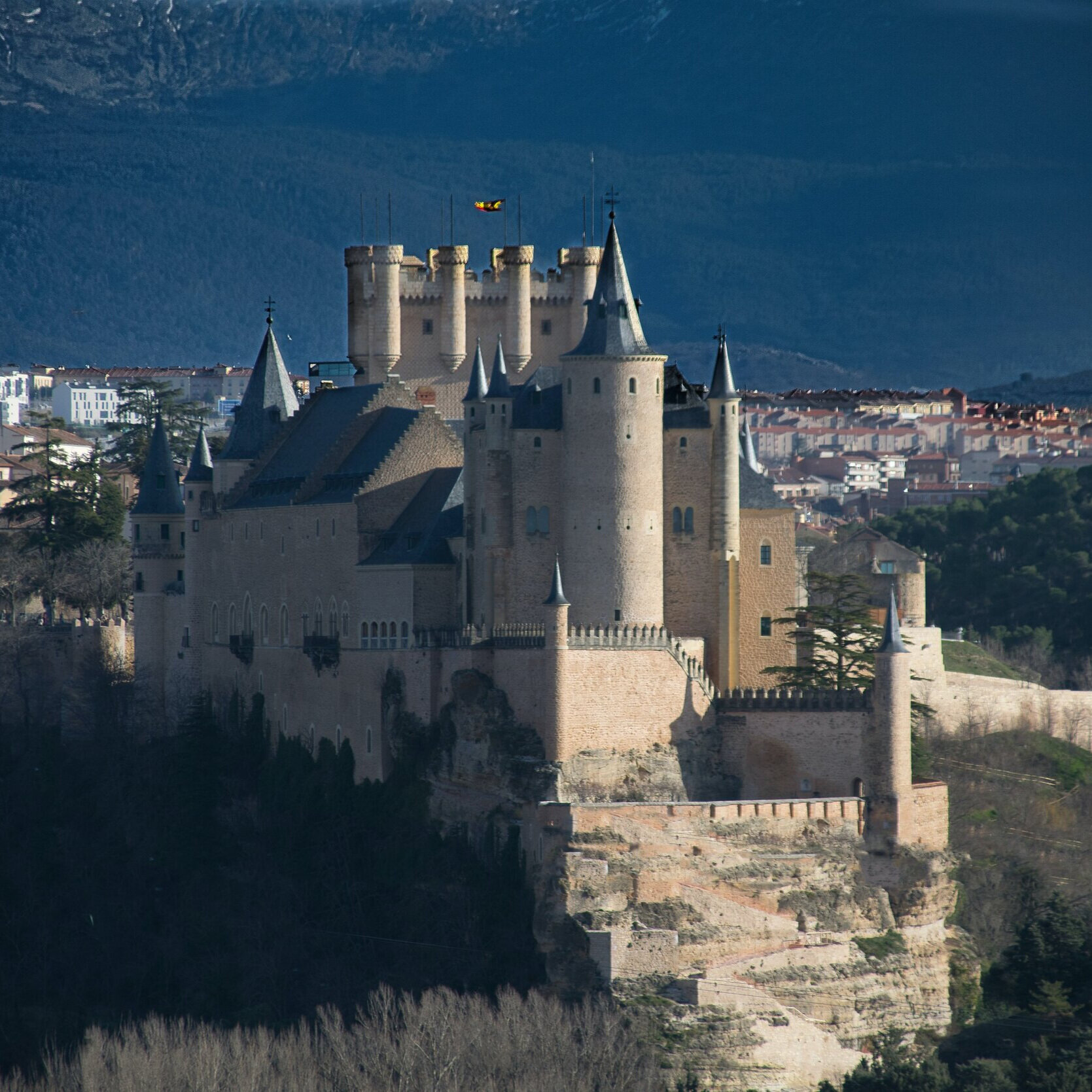 You can’t miss the aqueducts that essential serve as an enormous entryway to the old town, but be sure to tour the alcazar and take in the impressive views from there. While the Jewish quarter is a popular destination for good food, alternatively you might want to indulge in the city’s signature dish—conchinito or suckling pig.
You can’t miss the aqueducts that essential serve as an enormous entryway to the old town, but be sure to tour the alcazar and take in the impressive views from there. While the Jewish quarter is a popular destination for good food, alternatively you might want to indulge in the city’s signature dish—conchinito or suckling pig.
How to get there: In order to reach Segovia swiftly, be sure to coordinate your plans to travel on the AVE high speed train (rather than the standard RENFE train which takes about an hour). From the train station, you will need to catch the bus or take a taxi to the city center. Of course, driving is always a convenient option as well.
Patones de arriba
The municipality of Patones is divided into Patones de arriba (Upper Patones) and Patones de abajo (lower Patones), which is the more modern half of the area. We highly recommend checking out Patones de arriba for its beautiful hiking and architecture. The arquitectura negra (“black architecture,” a famous local form of medieval architecture that utilized the area’s abundant supply of slate) can be appreciated all along this adorable village set in the mountains.
How to get there: Patones can only be reached via public transport from Madrid by the line 197 bus. Alternatively, driving would be quick and convenient.
Valle de los Caídos
This destination is slightly infamous as it is the location where Francisco Franco was buried but has recently been exhumed. If you are unfamiliar with Franco’s significance and why an honored resting place for the general was a controversial issue for many Spaniards, please read our introductory article here.
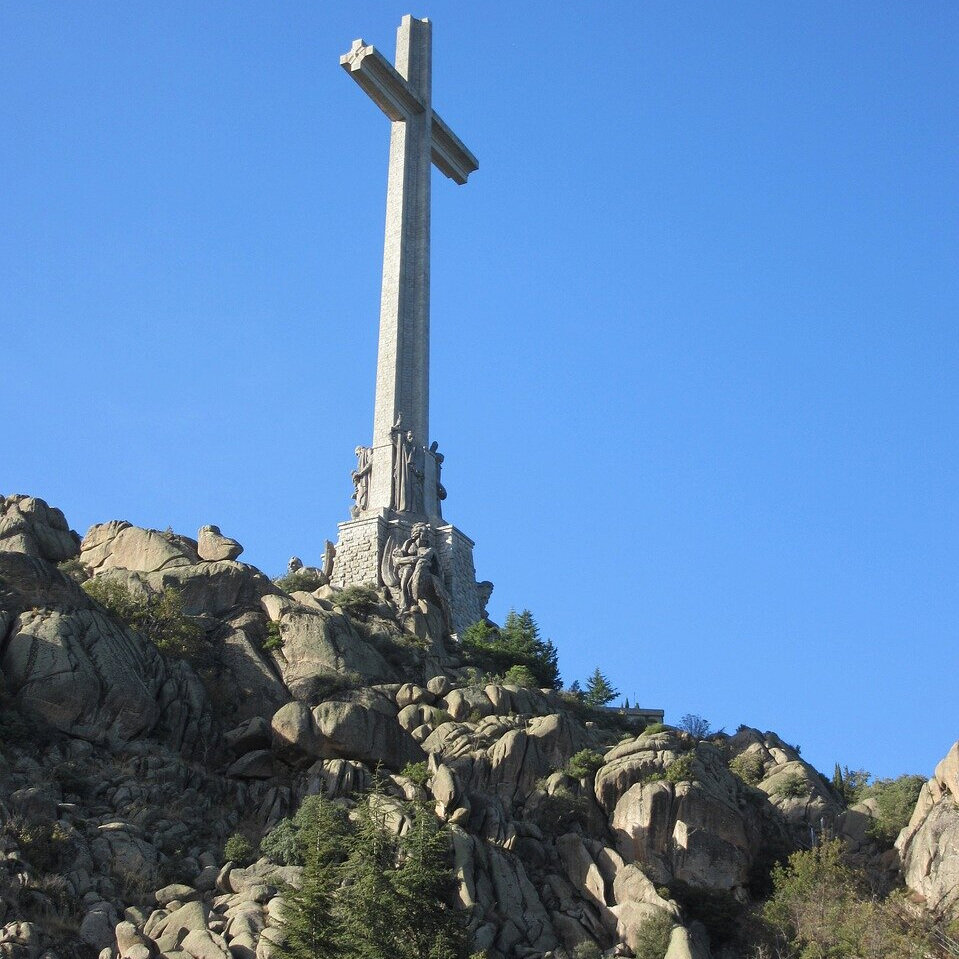 In spite of this significance, the “Valley of the Fallen” is a beautiful basilica and national monument. You can take a funicular from the basilica up the cross, which is said to be the tallest memorial cross in the world. Whatever your feelings are about its significance, you will likely enjoy the unique, beautiful views this site has to offer.
In spite of this significance, the “Valley of the Fallen” is a beautiful basilica and national monument. You can take a funicular from the basilica up the cross, which is said to be the tallest memorial cross in the world. Whatever your feelings are about its significance, you will likely enjoy the unique, beautiful views this site has to offer.
How to get there: This monument is located in the hills of El Escorial and so ambitious travelers could plan to visit both. However, do be aware that it can take nearly an hour to travel by car or taxi to the top. While it is easy enough to reach El Escorial by train or bus, be aware that options are limited to get up to El Valle de los Caídos. This is one destination that basically requires a car or looking into organized tour travel.
We hope you enjoy these destinations! Let us know if you have other favorite day trips from Madrid in the comments.
Sincerely,
Spain



